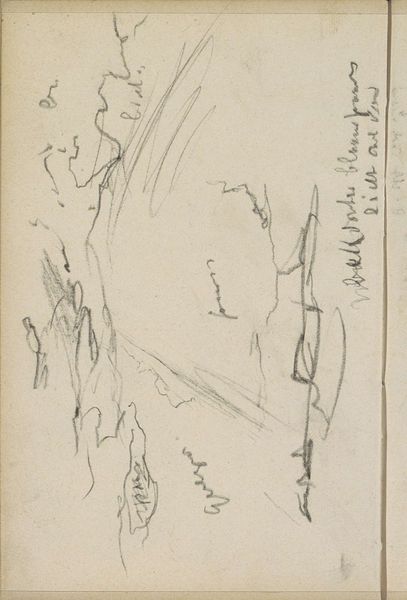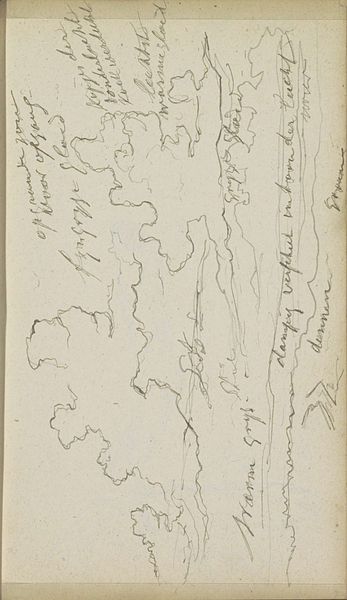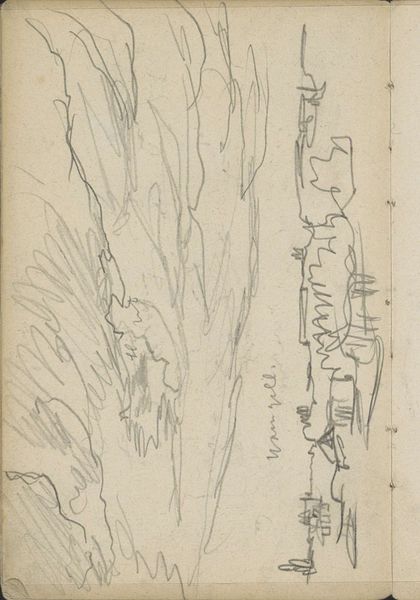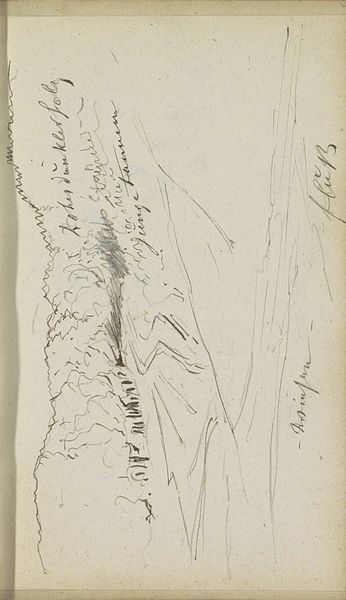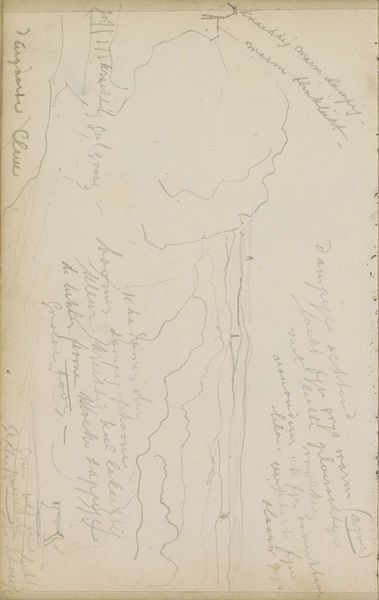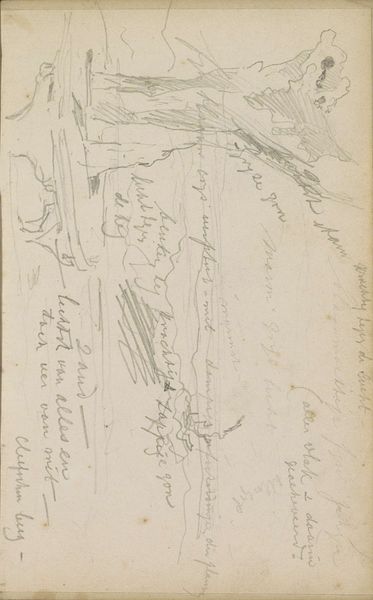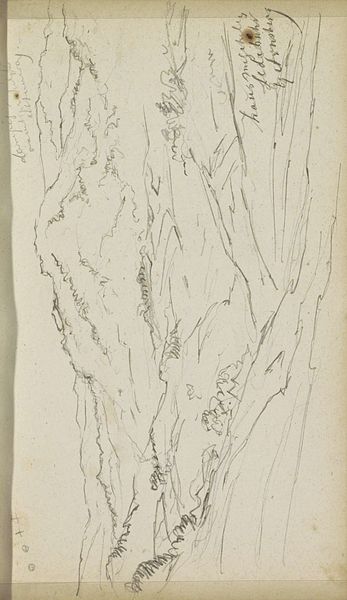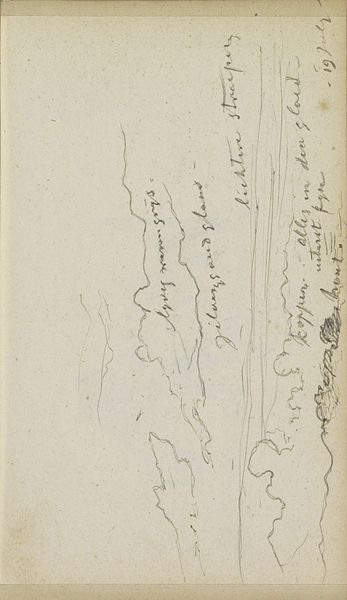
Copyright: Rijks Museum: Open Domain
Curator: Here we have a pencil drawing from Johannes Tavenraat, titled "Heidelandschap bij Arnsberg," placing its creation sometime after 1854. It currently resides here at the Rijksmuseum. What are your initial thoughts on it? Editor: The sheer sketchiness strikes me immediately. The light pencil strokes, the unfinished quality… It really emphasizes the raw materials – the graphite on paper, the artist's hand moving quickly. It feels immediate and process-oriented, almost like witnessing the very act of creation. Curator: Indeed. I see the faint pencil lines capturing not just the physical forms of the landscape but also a certain feeling, almost melancholy, evoked through the understated imagery. The quickness you noticed enhances that feeling of immediacy, carrying forward that era’s Romantic sensibilities regarding the awesome power of the natural world. Editor: And I wonder about the paper itself. Was it a fine, imported sheet, or something readily available, perhaps even scraps? The materiality certainly affects how we read the image. Knowing more about its origin—whether it was an everyday material or rare and precious—would really impact our understanding. Curator: You raise a valid point about accessibility of the means to create. Whether this was preparatory work to be expanded into a larger piece of art would shed even more light on that material consideration. Symbolically, too, landscape offers powerful iconography here, reflective of the late Romantic era, with those raw, desolate heathlands pointing towards deeper cultural memories. Editor: Right. It makes you question the landscape tradition. Instead of celebrating pastoral idylls, the artist almost deliberately emphasizes a kind of starkness, and you feel that rawness comes across powerfully in the minimal medium, which emphasizes humble rather than refined artistry. Curator: Absolutely. Its aesthetic whispers of quiet reflection and that melancholic awe you touched upon, far removed from any sort of heroic conquest or classical harmony that informed much prior work. Editor: So, between its sparse means and the artist's attention to nature's solemn mood, it really brings focus to both the physical artwork and its meaning. Curator: Precisely. It is compelling how the landscape retains symbolic meaning. Editor: Indeed. There's a kind of double attention being paid through these details of technique.
Comments
No comments
Be the first to comment and join the conversation on the ultimate creative platform.

